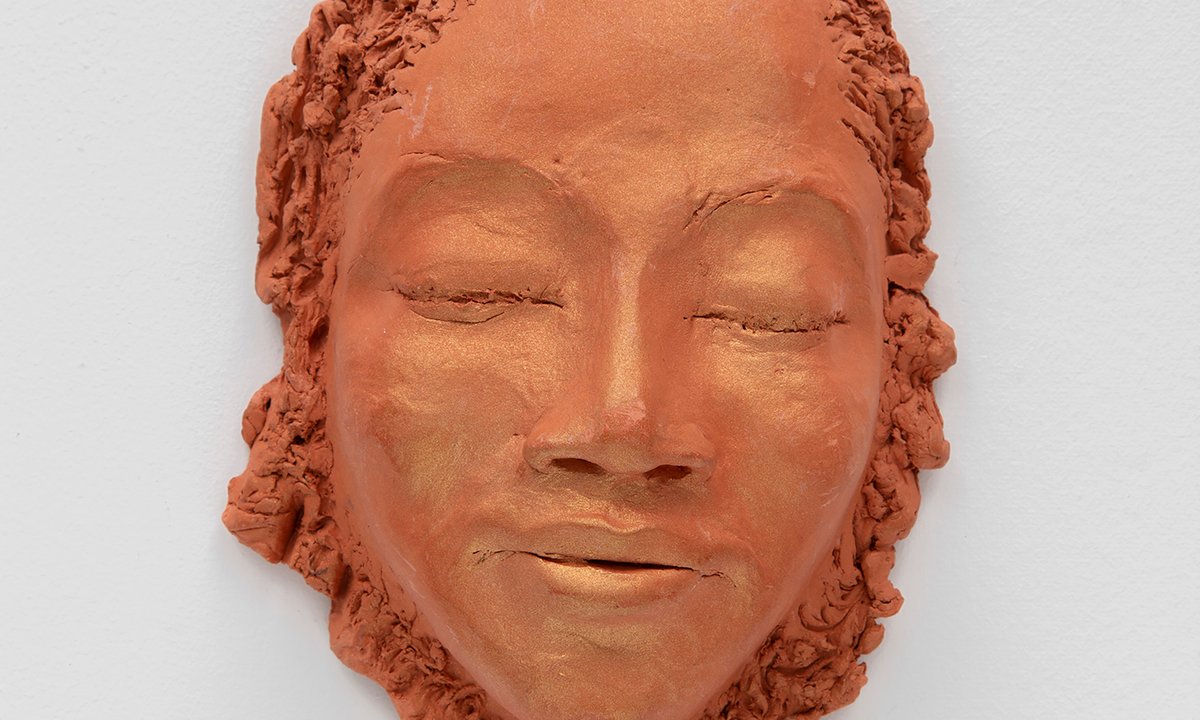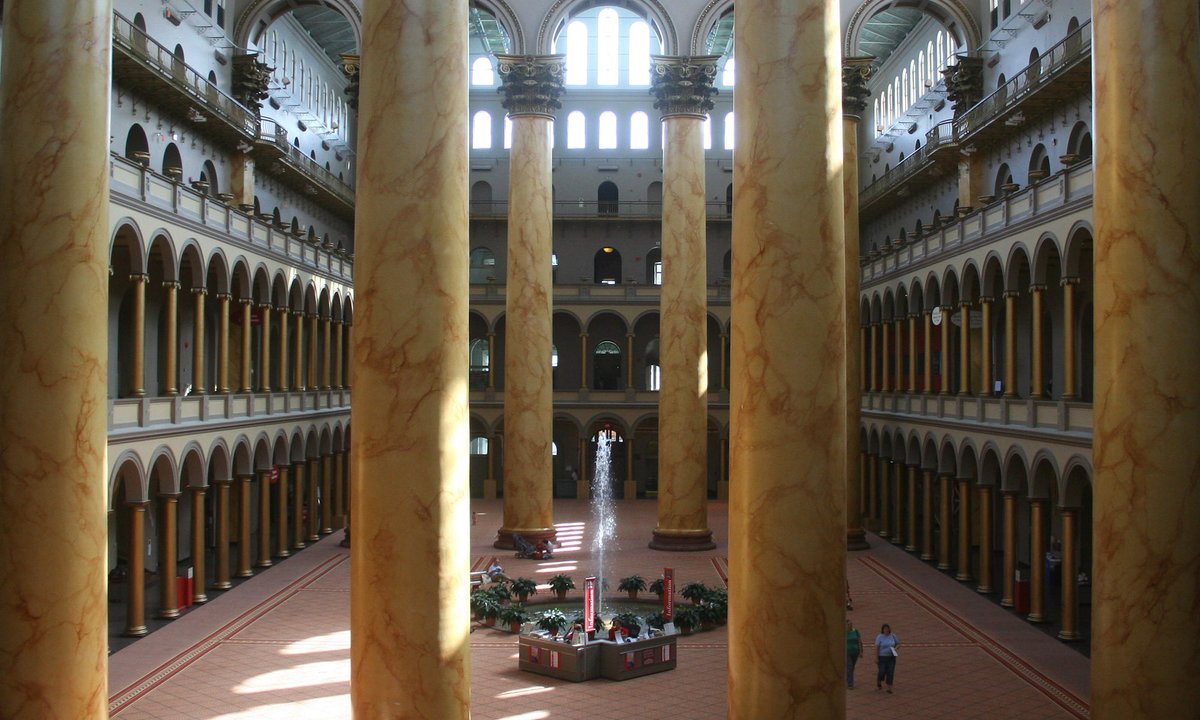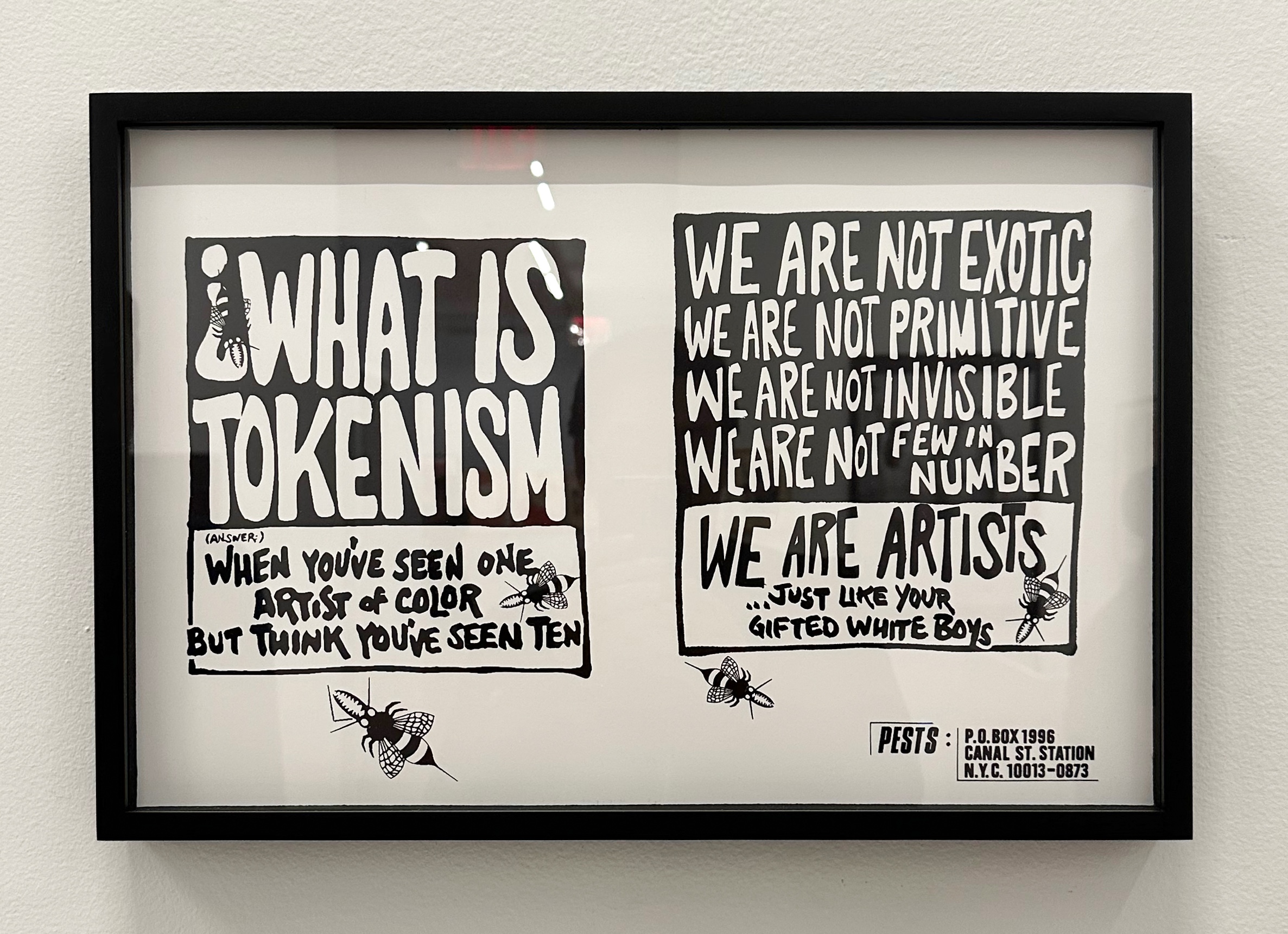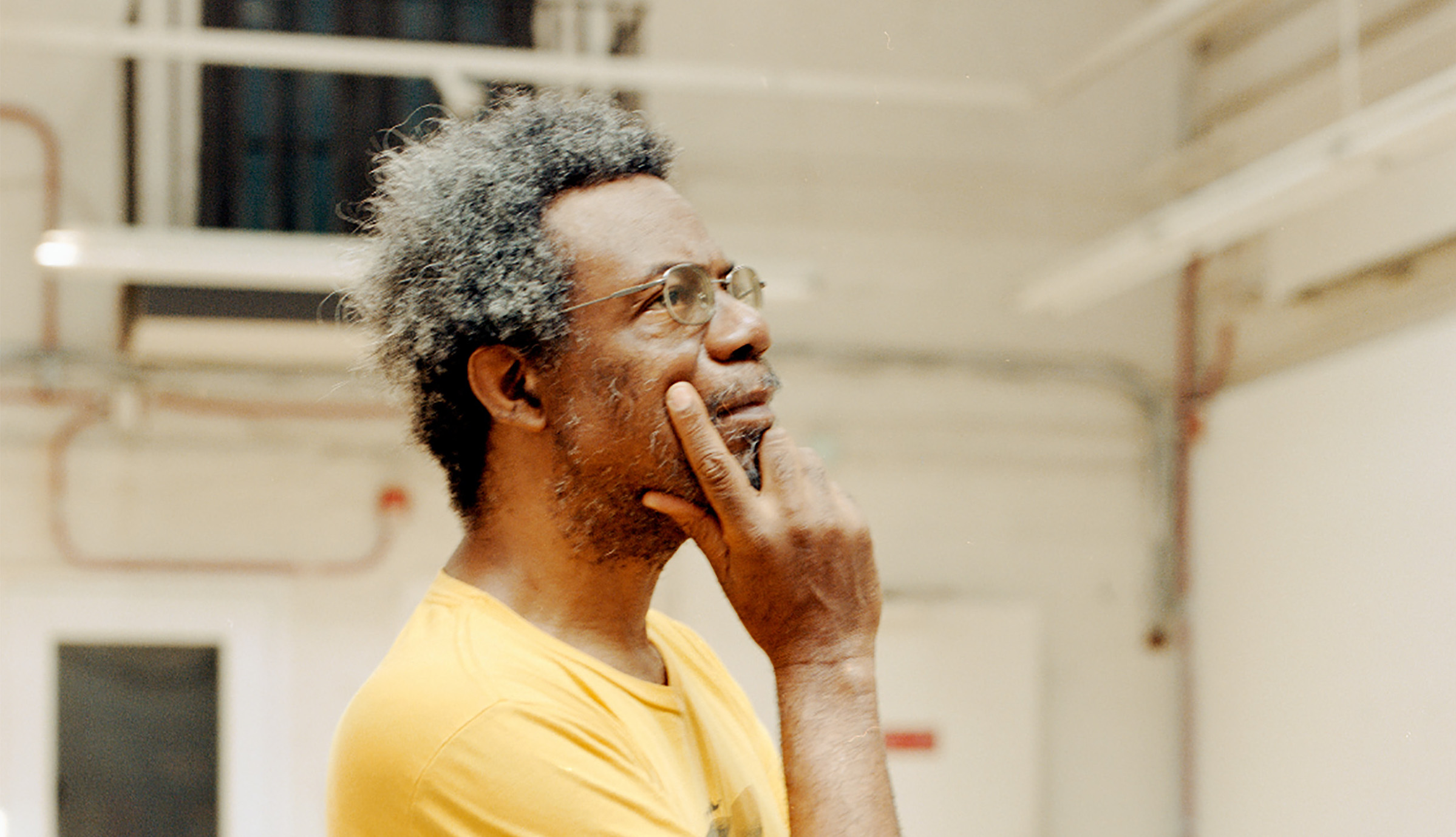Reverend Joyce McDonald went into detox, for the first time, in 1980. “I was in there, and my sister brought me a Bible, a pad of paper and a pencil,” she says. “The Bible, I didn’t know what I was looking at, back then. But I took that pencil and I started drawing. And I realise now that the deepest, darkest secrets in my life were coming out of me, onto that paper.”
McDonald is speaking from her studio in Brooklyn, New York. She wears a kaleidoscope of colours, her braided hair flows to her waist and her laughter rolls up from within her as she speaks. Around her neck are white pearls, a tribute to her late mother, the woman who introduced Joyce to art as a child.
McDonald is speaking, today, as one of the most anticipated new artists on show at London Gallery Weekend, with the gallerist Maureen Paley opening a solo exhibition today of McDonald’s work at Studio M gallery, titled, simply, Reverend Joyce McDonald.
McDonald covers her face in embarrassment at this sudden rush of attention, at the age of 72. “I don’t want to know,” she says. “I can’t imagine it. All the things that’s happened to me, I can’t imagine this now.”
Reverend Joyce McDonald © Reverend Joyce McDonald
It is, in fairness, perhaps an unlikely story. McDonald is open about the decades of addiction and abuse that almost claimed her life, that forced her into prostitution, destitution and incarceration and led to her to contract the Aids virus. But she struggles, also, to articulate it. “It’s always like talking about the tip of the iceberg,” she says, remembering the decades she lived with “a $100-a-day drug habit”. Getting clean took 14 years and 60 separate visits to a rehabilitation centre.
Today, in the 29th year of her sobriety, McDonald’s work as an artist comprises only a portion of her time. Most of her energies are channelled into the demands of being an ordained reverend at her church, The Church of the Open Door, on Gold Street, Brooklyn, just a block away from where she was born and raised in Farragut Houses, a sprawling social housing project close to the Manhattan Bridge in Brooklyn. As the church’s only female reverend, McDonald spends much of her time supporting women living in conditions which were once her own; on the streets, in shelters, prisons and hospitals, or coming to terms with an Aids diagnosis.
McDonald attended the church with her family as a child; she sang in the choir and stood in the pews in her Sunday best. But she had not returned to the church as an adult until, in 1994, and at the age of 43, she found herself, “strung out on drugs”, on a street close by. “I heard a voice,” she says. “It was telling me to go to that church. I hadn’t been to church for 30 years. I went upstairs to shoot drugs. The next thing I can remember, I was walking through the doors of the church.”
Returning to such a familiar, powerful place, she says, was akin to an out-of-body experience. “I can’t even remember it, but I found myself in front of the communion,” she says. “I told them how I had been abused, how I had been pulled into prostitution, tricked into prostitution, how I had been battered, kidnapped, raped,” she says. “I told them that quick, and I felt myself surrender my heart to God. It was the turning point in my life”.
McDonald can trace the beginnings of her addiction issues back to an early event. “We had a beautiful childhood,” she says of her upbringing in Farragut Houses. “It was like a village. Everyone knew and trusted each other.”
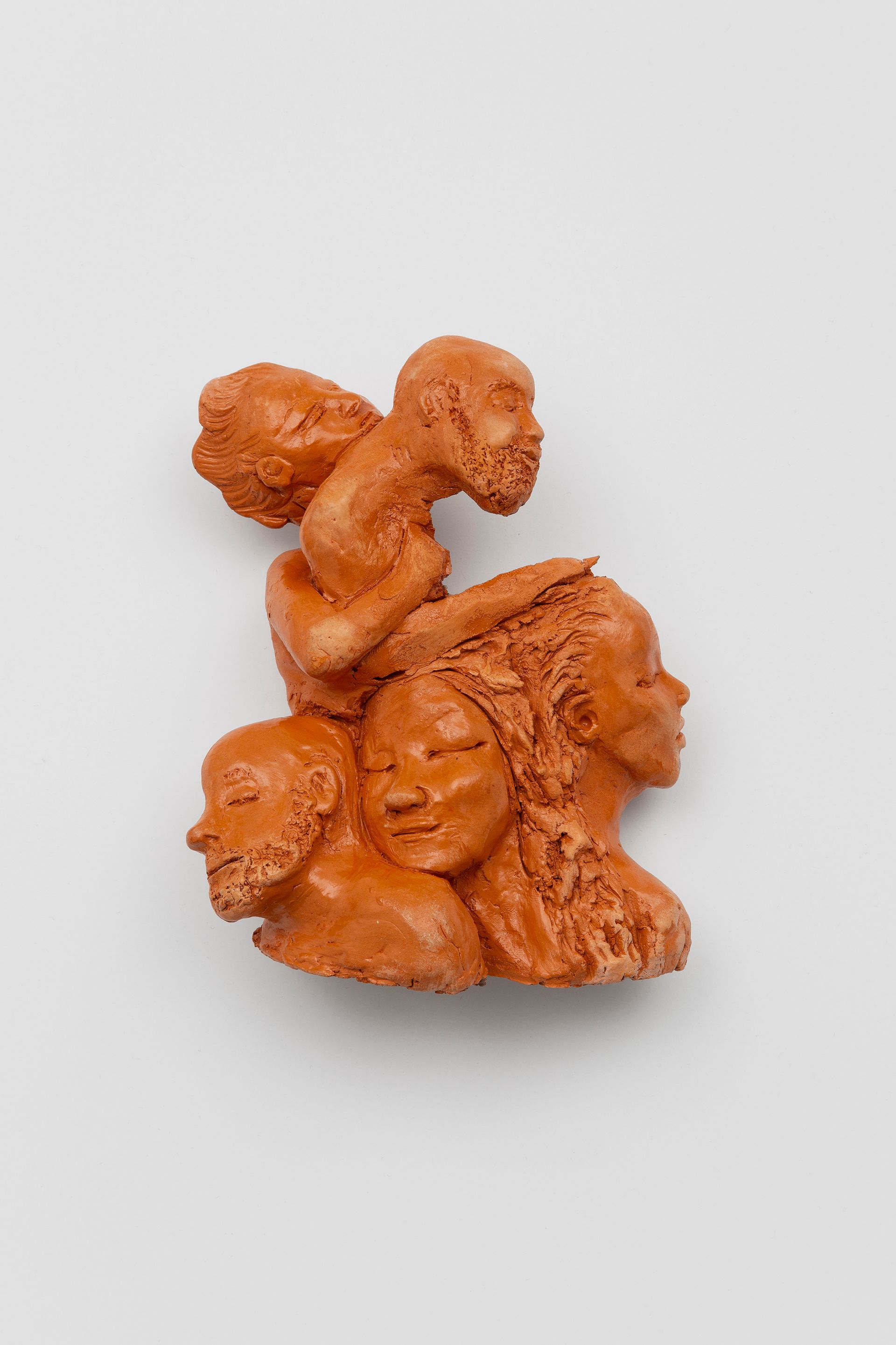
My Dear Love, 2020 © Reverend Joyce McDonald, courtesy Maureen Paley, London and Gordon Robichaux, New York
Her parents did everything they could to give her a stable upbringing. Her father was born in Alabama and served in the US military before securing a job in Brooklyn as a local postman. He seemed, to her, like “the most powerful thing alive”. He was an amateur artist who built his own furniture and a tailor who would design his own clothes. He recognised his daughter’s talent in drawing. “One day he came home and gave me books on Leonardo da Vinci and Picasso,” she remembers.
Her mother was brilliant with her hands. She would design her own clothes, make curtains and furnishings for their home. “She was very a talented seamstress,” McDonald says. “She was always turned out well. She had a sweet and strong beauty, but her time was spent taking care of her five children. She dedicated herself to that.”
She remembers, when she was five years old, playing outside with her brothers. On the return to her parent’s apartment, she got into the wrong elevator, finding herself on a strange floor of the block. A neighbour—a man her family knew and trusted—offered to help her home, but instead took the five-year-old girl to his flat. “I was molested by him,” McDonald says.
McDonald didn’t tell anyone. “But I don’t know how I kept it to myself,” she says. “I don’t know why, at five years old, I didn’t find the words to tell my parents. I never understood why I didn’t say anything.”
The sadness and loneliness McDonald felt after such a traumatic event is reflected in her art today. “I believe a lot of the things I felt back then are in my art today,” she says. “The protective angels, the little girls who are folded up in a foetal position, it’s all in there.”
McDonald’s childhood coincided with New York’s crack epidemic and the outbreak of Aids. “Heroine came into the neighbourhood, then Aids came, and then crack came,” she says.

Untitled, 2021 © Reverend Joyce McDonald, courtesy Maureen Paley, London and Gordon Robichaux, New York
She lost her father as a young woman. “But I never grieved for him,” she says. “I never cried for him. And at some point I made a conscious decision to take heroine, to deaden the pain.”
McDonald fell into an abusive relationship with an addict. She left her community in Brooklyn for Harlem, on the other side of Manhattan, and ended up sharing needles with other junkies. Her family supported her throughout, and she would return home to Farragut Houses before leaving again to pursue her habit. She was diagnosed with HIV in 1995, a year into her sobriety. The doctor told her she had probably lived with it for years.
Her modern-day practice comprises drawing, painting and photography. But the exhibition at Studio M focuses primarily on McDonald’s superlative abilities in sculpture.
When she was high, McDonald often would not know what to do with her hands. She mimics how she would instinctively play with things, compulsively feel the edges of them. She would fund her habit through sewing; making and selling hats and clothes. But, while in detox, she was given clay.
“The first time I put my hands on that clay, I felt overpowered,” she says. “Every horrific thing that’s happened to me, everything that I have experienced—I felt I was able to deal with it all through clay. It’s come out of me, into the clay.”
She cannot separate her work as an artist with her work as a Reverend. She quotes the Bible: “I shall not die, but live, and declare the works of the Lord.”
The gallerists Sam Gordon and Jacob Robichaux became aware of McDonald’s work in Brooklyn in 2016, after she won a prize at Visual Aids, a New York arts organisation that supports HIV-positive artists. They began to represent her a year later, when they opened Gordon Robichaux gallery in 2017, hosting her first exhibition at the gallery in 2021. Last year, Paley saw McDonald’s work at the Independent Fair in New York. Paley sought a meeting and pledged to exhibit her in London. “God has brought me from the shooting gallery to the art gallery,” McDonald says, a smile spreading across her face.
McDonald’s exhibition at Paley’s Studio M gallery span the 29 years she has remained clean and includes some of the early pieces she made during her detox. But a series of contemporary sculpture will form the centrepiece of the show.
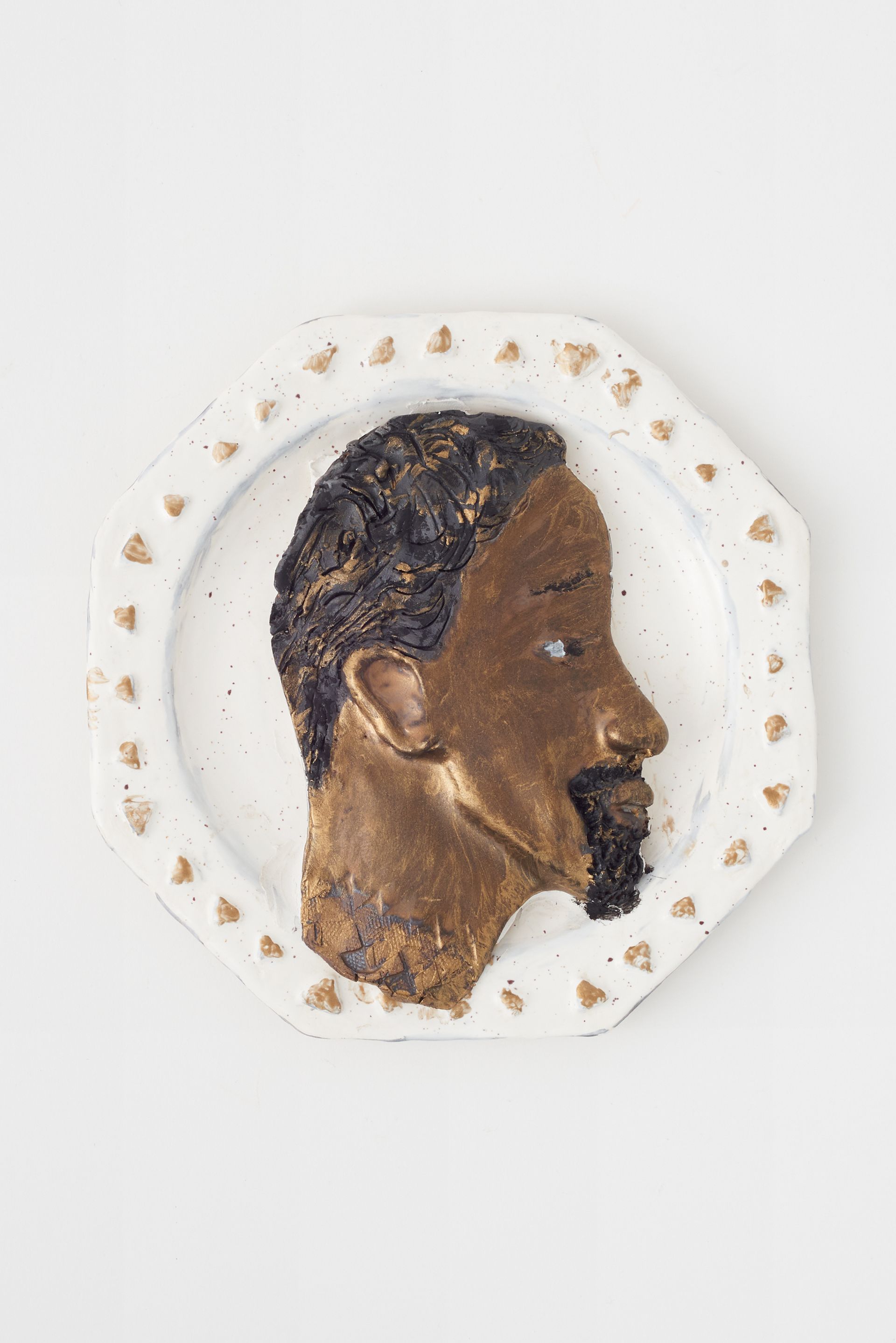
Mr. Senior, 2021 © Reverend Joyce McDonald, courtesy Maureen Paley, London and Gordon Robichaux, New York
When Covid-19 hit, McDonald sequestered herself in her apartment. She was unable to leave her home, even briefly, due to being HIV positive. Remembering her father, a keen photographer, she began photographing, from a distance, the range of people who delivered food to her each day during lockdown.
On 25 May 2020, news broadcasters started to pick up on a series of videos shot on the street by the Cup Foods convenience store in the Powderhorn Park neighbourhood of Minneapolis, Minnesota. A store clerk at Cup Foods had called the police after a customer, a Black man called George Floyd, allegedly tried to purchase some food with a counterfeit $20 bill. Floyd died after a policeman, Derek Chauvin, arrested and handcuffed him and then kneeled on his neck for more than nine minutes.
As McDonald learnt of Floyd on the news, she began to create him in clay. She talks about the experience as akin to a religious experience. She felt Floyd’s shoulders and neck form beneath her fingers, and the act of remaking his body in clay led her to cry. “I didn’t eat, I didn’t bathe, I don’t think I even drank water,” she says. “I sat there, covered in clay, weeping, until he was fully formed. It took me all night.”
When the art handlers came to her studio to take the sculpture to the gallery, she struggled to part with it. “I escorted it all the way there,” she says. “It felt like a funeral procession. And now it’s over there in London.”
